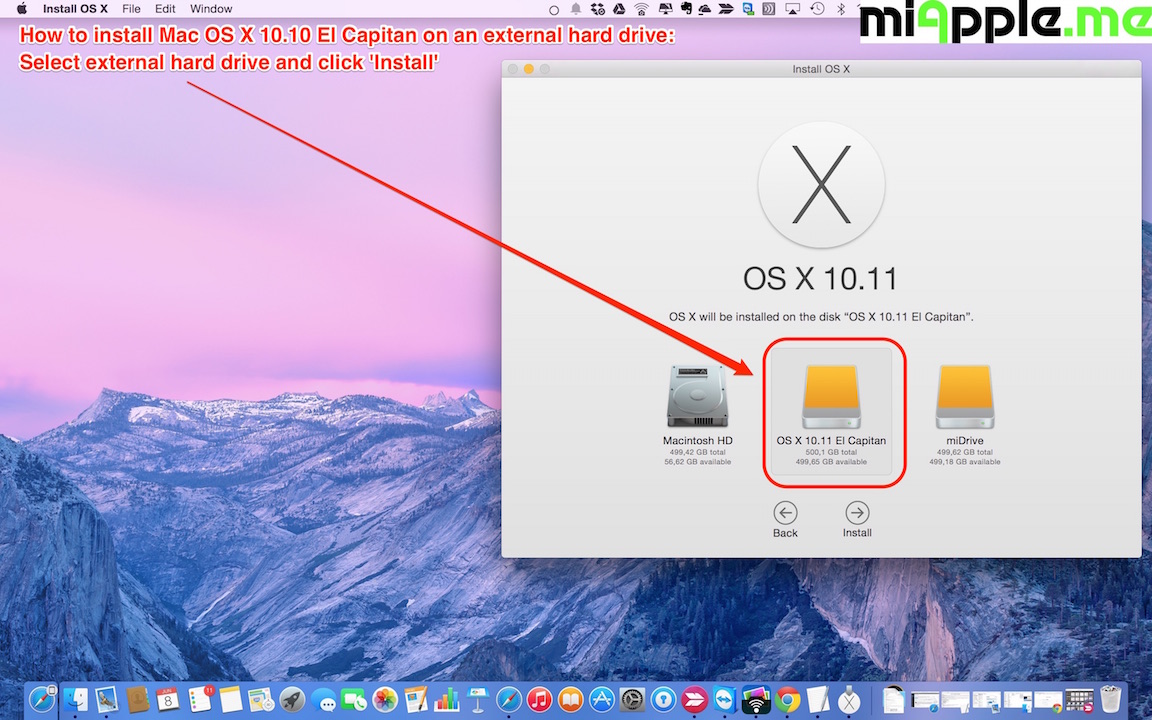

- #Create bootable usb os x el capitan mac os x
- #Create bootable usb os x el capitan mac os
- #Create bootable usb os x el capitan install
- #Create bootable usb os x el capitan password
- #Create bootable usb os x el capitan free
Sudo /Applications/Install\ macOS\ Mojave.app/Contents/Resources/createinstallmedia -volume /Volumes/ MyVolume Sudo /Applications/Install\ macOS\ Catalina.app/Contents/Resources/createinstallmedia -volume /Volumes/ MyVolume Sudo /Applications/Install\ macOS\ Big\ Sur.app/Contents/Resources/createinstallmedia -volume /Volumes/ MyVolume Sudo /Applications/Install\ macOS\ Monterey.app/Contents/Resources/createinstallmedia -volume /Volumes/ MyVolume If it has a different name, replace MyVolume in these commands with the name of your volume. These assume that the installer is in your Applications folder and MyVolume is the name of the USB flash drive or other volume you're using.

#Create bootable usb os x el capitan install


Terminal shows the progress as the bootable installer is created. When prompted, type Y to confirm that you want to erase the volume, then press Return.Terminal doesn't show any characters as you type your password.
#Create bootable usb os x el capitan password
When prompted, type your administrator password and press Return again.If it has a different name, replace MyVolume in these commands with the name of your volume. These assume that the installer is still in your Applications folder, and MyVolume is the name of the USB flash drive or other volume you're using.
#Create bootable usb os x el capitan mac os
Make sure that it has at least 12GB of available storage and is formatted as Mac OS Extended. Use the 'createinstallmedia' command in Terminal
#Create bootable usb os x el capitan free
Diskmaker X is free to download, but the creator accepts donations if you want to support his efforts.Version 5 is the one with official El Capitan support. If you want a GUI, you need the latest version of Diskmaker X app.The installer will delete itself when you install the operating system, but it can be re-downloaded if necessary. The OS X 10.11 El Capitan installer from the Mac App Store in your Applications folder.For newer Macs, use a USB 3.0 drive-it makes things significantly faster. An 8GB or larger USB flash drive or an 8GB or larger partition on some other kind of external drive.We've created El Capitan USB stick from both Yosemite and El Capitan, but your experience with other versions may vary. A Mac that you have administrator access to, duh.There's the super easy way with the graphical user interface and the only slightly less easy way that requires some light Terminal use. On the terminal, the.Īs with last year, there are two ways to get it done. Yes I have downloaded El Capitan (InstallMacOSX.dmg) and renamed it to Capitan.app in the Applications folder. The OS of the older Mac has been corrupted and cannot boot. I read through it though but what I needed was a way to make a bootable El Capitan USB (for use in an older Mac) while on a newer Mac running Catalina.OS X El Capitan is finally here, and if you're looking to install Apple's new desktop OS fresh from the ground up, then.
#Create bootable usb os x el capitan mac os x


 0 kommentar(er)
0 kommentar(er)
